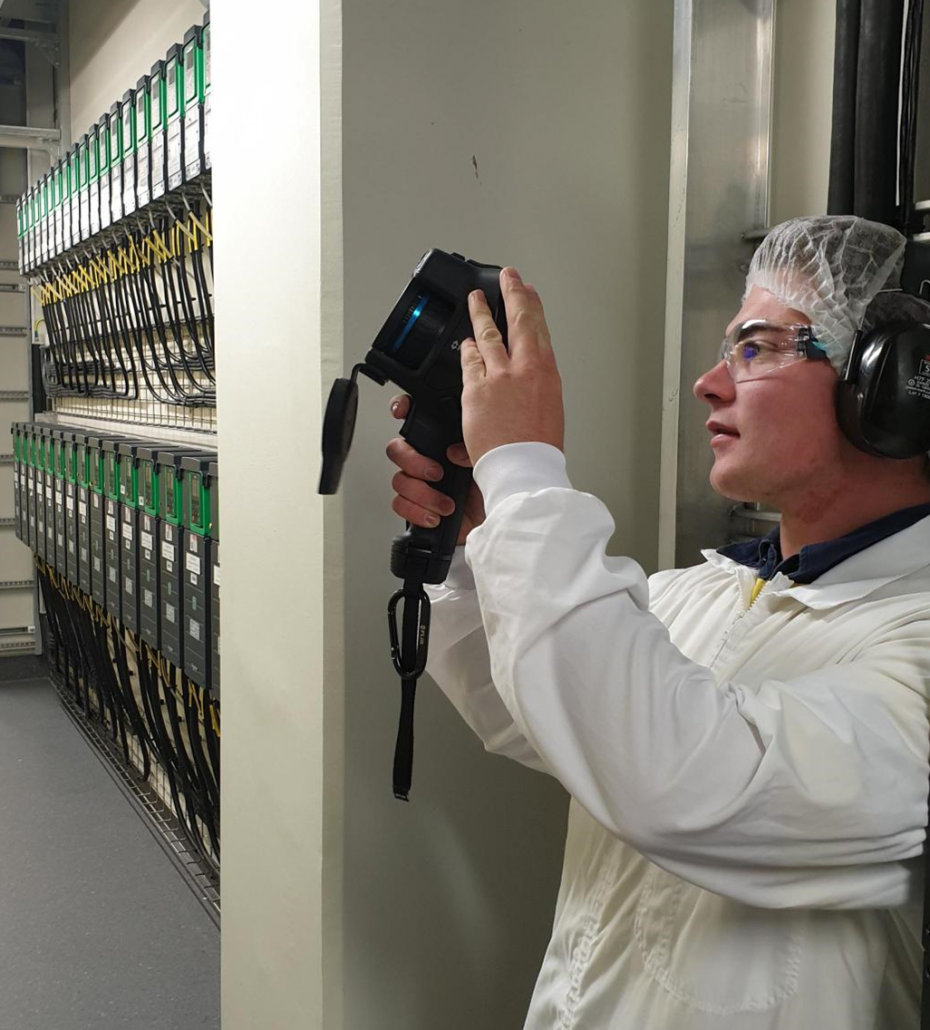Thermal Imaging Checks
One of the tricky things about electrical systems is that you often can’t see faults without taking things apart.

Thermal imaging or thermography is a non-intrusive, non-contact method of detecting electrical faults that are hidden to the naked eye. During a thermal imaging survey, we use our specialised camera to capture images of the heat energy emitted by your electrical equipment.
The thermal camera measures the temperature of the electrical components and creates an image that shows the temperature distribution across the surface of the equipment
Thermal imaging should be an important part of your preventative maintenance plan as these checks can indicate faults that you may be completely unaware of before they become a serious problem. Heat is often an early symptom of equipment damage or malfunction, and by detecting these problems early, corrective action can be taken before the damage becomes more extensive reducing the risk of equipment failure, reducing the costs of reactive maintenance and unplanned downtime and it can also help extend the lifespan of your assets.
Thermography checks should be performed regularly as part of your routine maintenance plan, however other events can also mean a thermography check should be done, including:
- after any major changes or upgrades to the electrical system
- if there are signs of overheating or burning smells coming from your electrical equipment
- if there have been any electrical system failures or intermittent faults
- if there has been a power surge or electrical storm which may have caused damage to the electrical system.
Thermal imaging can be used to check:
- Electrical panels
to detect hot spots caused by loose connections, overloading, or other issues that may lead to equipment failure or fire hazards. - Circuit breakers
to detect hot spots caused by overload or faulty operation, which may result in equipment failure or electrical fires. - Motors
to monitor the temperature of bearings, windings, and other components to detect signs of wear or damage that may lead to equipment failure. - Switches
to detect hot spots caused by overload or faulty operation, which may result in equipment failure or electrical fires. - UPS systems
to monitor the temperature of batteries, components, and wiring to detect signs of wear or damage that may lead to equipment failure or power interruptions. - Generators
to monitor the temperature of bearings, windings, and other components to detect signs of wear or damage that may lead to equipment failure.
The EAS team are trained and highly skilled in carrying out thermal imaging. To book a thermal imaging check of your vital equipment get in touch with the EAS team today on 07 834 0505.

Leave a Reply
Want to join the discussion?Feel free to contribute!